Table of contents
- Report: Factory visit to Bridgestone In the halls of the Japanese tire manufacturer
- Bridgestone – The Story
- Out and about in Japan
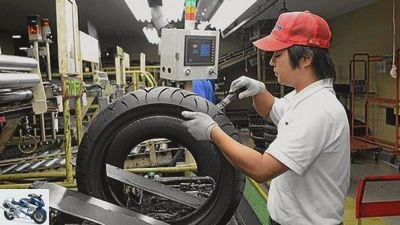
Plom
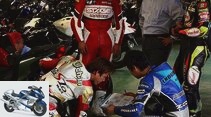
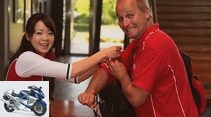

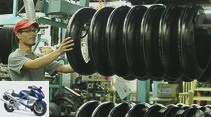
13th pictures
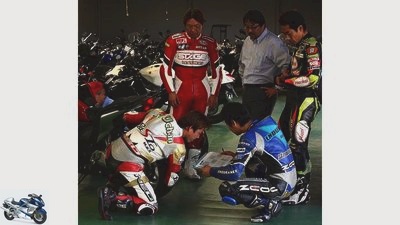
1/13
50 test motorcycles are available on the test site at the Nasu tire plant.
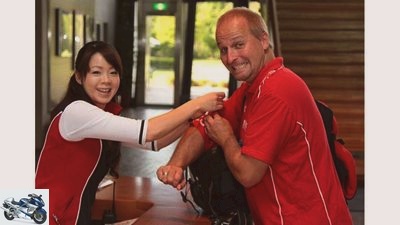
2/13
Long nose Lohse in the land of smiles: a radiant welcome at the Honda Museum.
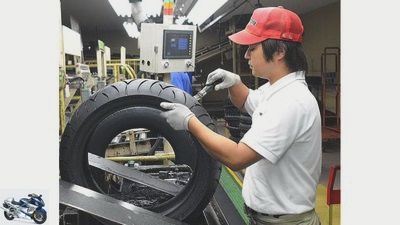
3/13
The inspector releases the tires.
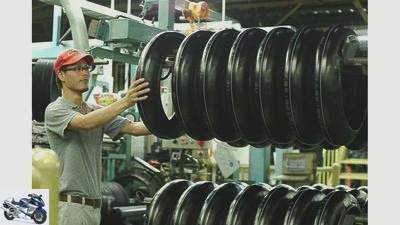
4/13
The blanks – ready for further processing.
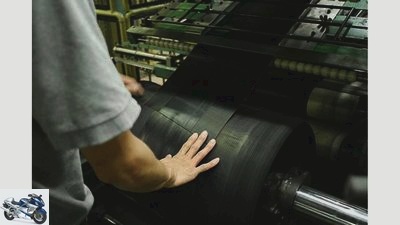
5/13
The construction phase: The various carcass layers are assembled.

6/13
Blanks are ready for vulcanization.
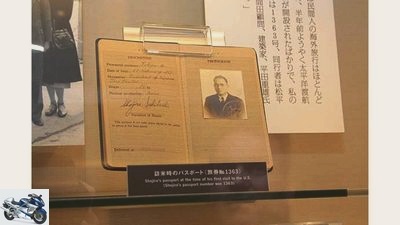
7/13
Allow me, Shojiro Ishibashi. A tour of his museum in Tokyo.
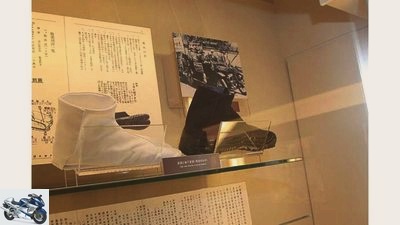
8/13
Also made the socks: 17-year-old Ishibashi started with traditional tabis in 1906.
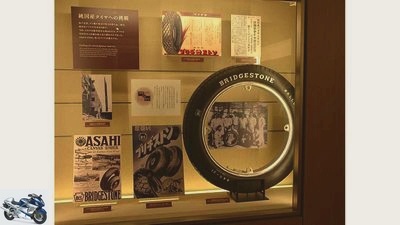
9/13
Things have been going smoothly since 1931: The first Bridgestone tire from the Kurume plant.
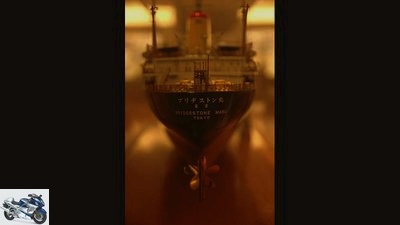
10/13
Company fleet at sea: for trading in liquefied gas.
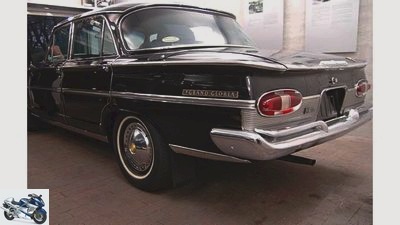
11/13
Fast six-cylinder on land: the Prince Motor brand was once part of Ishibashi’s empire.
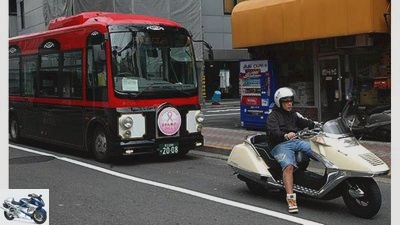
12/13
Shape the traffic in Tokyo: Hod-Rod buses and Honda Helix in cruiser look.
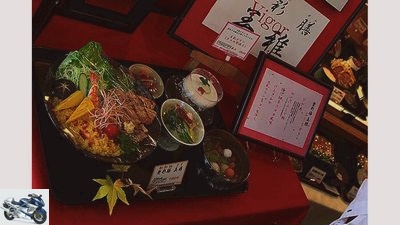
13/13
Even if you don’t know the language, you know what’s on the table.
to travel
Report Factory visit Bridgestone
Report: Factory visit to Bridgestone
In the halls of the Japanese tire manufacturer
80 years ago, a successful Japanese sock manufacturer decided to get into the tire business. What is missing is a globally strong name. Welcome to the world of Ishibashi-san – or in English: Mr. Bridgestone.
Jorg Lohse
03/17/2011
It must be a mighty leap into the deep end when Shojiro Ishibashi took over his parents’ Tabi business in 1906 at the age of just 17. Tabis were an integral part of the Japanese costume at the time: ankle-high socks with a separate big toe, which should enable workers, for example, to climb scaffolding or ropes. The young Shojiro understands the chance of his life and turns the shop around: Downsizing the product range, shorter working hours with days off – the youngster from the island of Kyushu on the southern tip of Japan wants to make his company fit for the future.
The rapidly advancing mobilization also opens up new advertising opportunities for Ishibashi. As early as 1912 he was driving his car through his hometown Kurume and praising his tabis under the brand name Asahi on the side walls. At the same time, Shojiro is developing a flat-rate sales tactic that is revolutionary by Japanese standards: the prices of his tabis are no longer – as is common practice – based on their size, the socks cost the equivalent of 20 cents across the board. In one fell swoop, Ishibashi’s tabis are in demand like never before, and his Asahi brand becomes the market leader in Japan.
Buy complete article
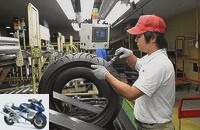
Report: Factory visit to Bridgestone
In the halls of the Japanese tire manufacturer
3 pages) as PDF
€ 2.00
Buy now
At the same time, the now almost 30-year-old starts looking for new sales markets. At that time, simple straw sandals (“Waraji”) that are simply put on after work and have to be bought new every day. Ishibashi’s idea: to create a robust version of the tabis with durable rubber soles. Sales began in 1923, and the so-called Jika Tabis were popular not only among workers, but also with schoolchildren and students. Above all, Shojiro Ishibashi now comes into contact with a material that will determine his life from now on: rubber.
In the midst of the global economic crisis, Ishibashi decides to bring the first car tire from Japan onto the market. A corresponding machine park was quickly organized in the USA, and the first prototype was completed in 1930.
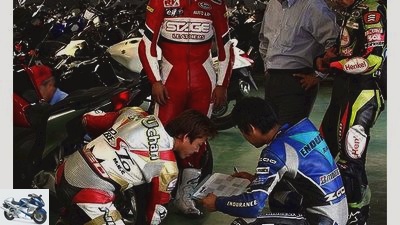
50 test motorcycles are available on the test site at the Nasu tire plant.
But what the visionary Ishibashi still lacks is a powerful name in order to be able to sell his product successfully worldwide. The entrepreneur forms the English word from the Japanese syllables of his name, Ishi (stone) and Bashi (bridge) Bridgestone and founds the Bridgestone Tire Company in 1931 with the first tire factory in Kurume. The sale begins with a daring guarantee promise: free replacement in the event of a defect.
In its first year, the young company had to replace 100,000 tires, but this Ishibashi-san company is also rapidly gaining momentum. Bridgestone tires were approved by the major US car brands Ford, General Motors and Chrysler as early as 1932, and global trade flourished until the US trade embargo in the wake of the Sino-Japanese war (from 1937) quickly caused exports to collapse again.
Only after the Second World War did the global tire market really get going again. The factory in Tokyo is opened in 1960 and a workers’ settlement with its own infrastructure – from supermarkets to hospitals – is created at the same time. The plant in Nasu follows in 1962,
100 kilometers north of Tokyo, today the production facility for all Bridgestone motorcycle tires with 870 employees. 6,300 motorcycle tires are baked here every day. The special thing about it: every single tire is inspected by hand. Only when the inspector is satisfied does he press his control stamp on the side wall.
1973 Ishibashi retires from the company management. In his legacy to his successors, he takes up the thoughts that have accompanied his entrepreneurship over the past seven decades: work profitably, develop good products for satisfied customers and treat all workers and employees with respect.
Bridgestone – The Story
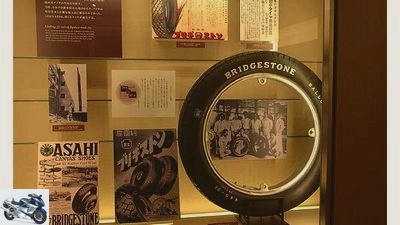
Things have been running smoothly since 1931: The first Bridgestone tire from the Kurume plant.
Bridgestone tires have been rolling around the world for 80 years. Before that, company founder Shojiro Ishibashi (1889-1976) made a name for himself with tabis (Japanese traditional socks).
1906 Ishibashi takes over his parents’ textile company in Kurume / Japan.
1930 the prototype of the Bridgestone car tire in the dimensions 29 x 4.5 inches is presented.
1962 The first motorcycle tire rolls off the assembly line at the new Nasu plant in Japan. To this day, all Bridgestone motorcycle tires are made here.
1985 For the first time, several rubber compounds (multicompound) are processed in one tire (BT 012).
Out and about in Japan
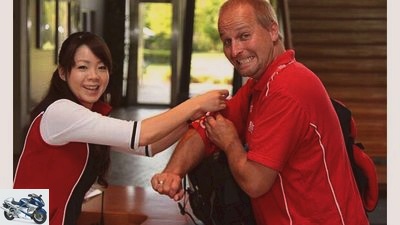
Long nose Lohse in the land of smiles: a radiant welcome at the Honda Museum.
No sooner had the invitation to Tokyo made the rounds than advice and recommendations from colleagues rained down: you must visit the Tokyo Tower – but only at night. The yen is bad, but maybe you can shoot a Canon G11 cheaply in the Akihabara area. When you’re in Motegi, forget the world championship races, go straight to the Honda Museum – that’s the Oberhammer. Be careful with the buttons next to the toilet seats . . .
Enough for a four-week trip, I have four days left, in other words: hurry through, tick off, my head is already buzzing. Suddenly everything changes at Tokyo Narita Airport. The uniformed lady behind the immigration counter balances my passport with both hands like a precious gem and carefully hands it over the counter. In addition, a warm smile and a deep bow: “Welcome to Japan!” The scene is repeated a little later in the shuttle bus to Tokyo City. After all the passengers have taken their seats, the ticket inspector enters the bus smiling again and expresses her thanks with a deep bow: “Thank you for traveling with us!”
The doors hiss, the contrast program begins. Into the crowded narrowness of Tokyo, in which a network of overcrowded, stacked highways winds past the windows of office and apartment towers barely more than an arm’s length away. Subway stations suck in crowds until late at night and then spit them out again. But all of a sudden, the high-frequency confusion runs off in slow motion – as soon as you enter a shop, go to a restaurant or just ask for directions. Suddenly there is the moment of encounter, of respectful bowing, of smiling, which is celebrated like a precious ritual.
Related articles
-
Report: Visit to the Magura factory
Jahn motorcycles Report: Visit to the Magura factory Report: Visit to the Magura factory Specialist in grips, brakes and handlebars At Magura, the relics…
-
Report to the Alpinestars factory visit
Alpinestars 15th pictures plant 1/15 This is what they used to look like: motocross boots. The following pictures show you the Alpinestars story and how…
-
Report: A factory visit to the brake specialist Brembo
wolf 12th pictures wolf 1/12 Laboratory check: problem cases such as brake fading are simulated on 18 test stands. wolf 2/12 Disc wheel? No, Gianluca has…
-
Factory report: Shoei – Made in Japan
Lohse 9 pictures Lohse 1/9 Taking a break together: In the Iwate canteen, an eager kitchen crew takes care of the typical Japanese lunch. Lohse 2/9 Each…
-
Factory visit to the charger manufacturer CTEK
Stefan Wolf 9 pictures wolf 1/9 The CTEK makers (five of 130, from left): Andreas Naslund (46, General Manager North America), Peter Caris (67, volunteer…
-
Report: Royal Enfield factory visit
Horenburg motorcycles Report: Royal Enfield factory visit Report: Royal Enfield factory visit A visit to the English cult brand Royal Enfield unveiled…
-
Blacksmith 14th pictures Blacksmith 1/14 In the factory, the production of your favorite bikes can be carefully examined. www.jkuenstle.de 2/14 Party in…
-
Driving report Aprilia RSV4 Factory
Aprilia 24 pictures Aprilia 1/24 in the superbike variant Aprilia 2/24 Aprilia RSV4 superbike. Aprilia 3/24 Aprilia RSV4 superbike. Aprilia 4/24 Aprilia…
-
Driving report: Husqvarna TE 449 RR rally factory machine
Jahn 22nd pictures Jahn 1/22 Factory rally machine Husqvarna TE 449 RR. Jahn 2/22 Wheels: To avoid flat tires, foam rubber rings (mousse) are always used…
-
Report on Royal Enfield – visit to Oragadam plant
Markus Biebricher counselor traffic & business Report on Royal Enfield – visit to Oragadam plant Report on Royal Enfield – visit to Oragadam plant More…